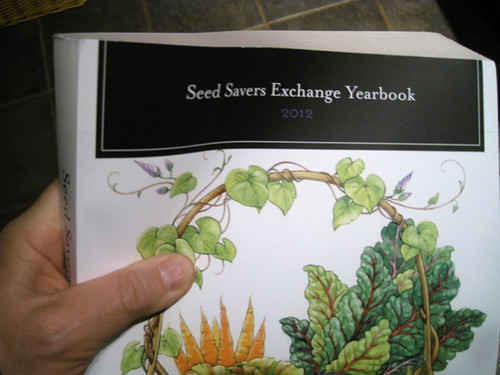

We walked around the gardens on the last day of the seed saving school, looking at different plants whose seeds were already dry and ready for harvesting. After you’ve harvested your seeds and washed away any pulp and debris, you can set the seeds out to dry on a coffee filter before storing them. It might surprise you to learn that coffee filters are another great tool for processing wet-seeded crops. Save cucumber seed in the same way that you would for tomatoes. You can save seeds from cucumbers when the cucumbers are past maturity, when they have enlarged and changed colors. This fermentation eats away at the gel-like sack that encloses the tomato seeds and it will help your seeds germinate well next year. Place the jar of seeds and pulp in a well-ventilated space for a few days until the good seeds float to the bottom of the jar and the pulp and debris rises to the top. You can squeeze the seeds and pulp of one variety of tomato into a mason jar. Harvest tomatoes for seed when they are ready to eat. A mason jar comes in handy when you’re processing seeds from two fruits, tomatoes and cucumbers, whose seeds need to be fermented for several days before they can be cleaned and stored.
#SEED SAVERS EXCHANGE HOW TO#
We spent a portion of the weekend talking about how to process seeds from wet-seeded crops like tomatoes, cucumbers, squash, melons, eggplants and peppers.

Throughout this post, we will walk through a few of the classes that were taught during the Seed Saving School and highlight the tools we used in those classes. You probably have many of the supplies floating around your house or your garage. They can return to their communities and spread their knowledge to create more and more seed savers.Īlthough it was a great weekend, you don’t need to travel to Heritage Farm to gather the tools for seed saving. Like individual seeds, those students possess the resources they need to grow and multiply. After three days of workshops, tours, classes and meals, they floated away, one by one, as we harvested seeds in the afternoon. Those twenty-four seed savers came to Heritage Farm from all over the country to attend our 2nd annual Seed Saving School.


 0 kommentar(er)
0 kommentar(er)
